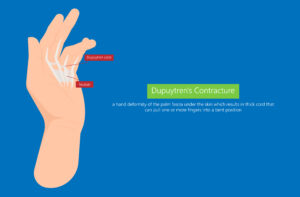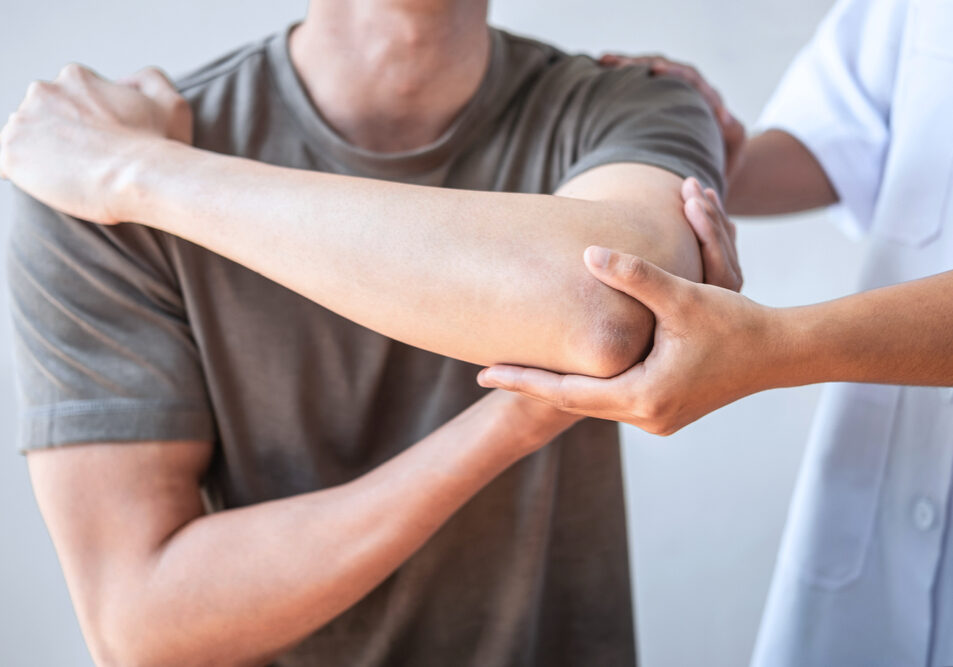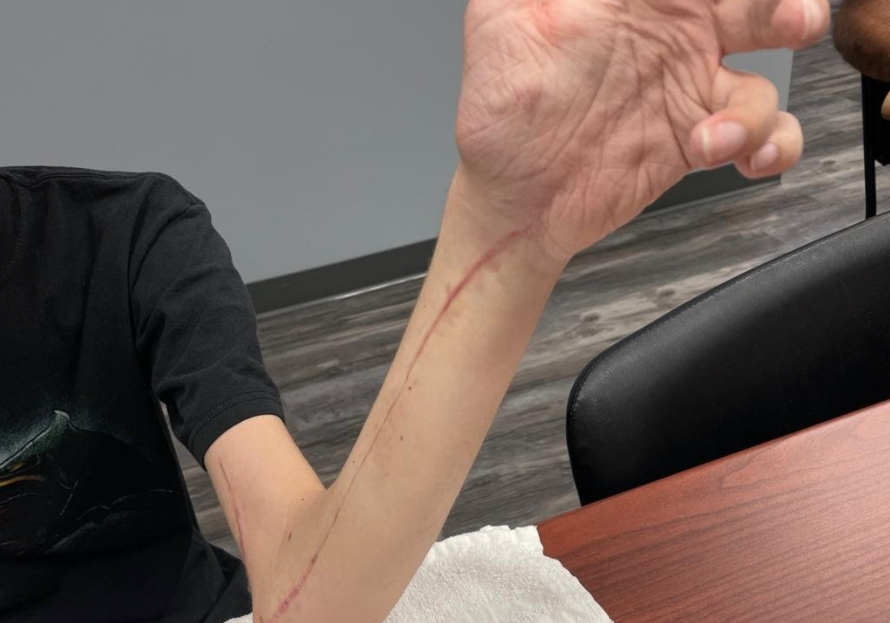Collagenase injection versus Partial fasciectomy in the treatment of Dupuytren’s contracture
Filed under Reviews
Rapid Review By: Shruti Jani
Title: Collagenase injection versus partial fasciectomy in the treatment of Dupuytren’s contracture
Reference: Tay, T. K. W., Tien, H., & Lim, E. Y. L. (2015). Comparison between Collagenase Injection and Partial Fasciectomy in the Treatment of Dupuytren’s Contracture. Hand Surgery, 20(3), 386-390. https://doi-org.mwu.idm.oclc.org/10.1142/S0218810415500288

The Skinny: “Comparison between Collagenase Injection and Partial Fasciectomy in the Treatment of Dupuytren’s Contracture” by Tay et al. (2015) is a comparative study that aims to compare collagenase injection and partial fasciectomy for patients with Dupuytren’s disease. The study aims to determine pre-treatment and post-treatment differences among patients in the net degree of passive extension, complication rate, and patient satisfaction. A total of 37 patients were recruited between August 2002 to January 2005 and were followed up for two years.
In the Weeds: A total of 37 patients with 62 metacarpophalangeal joints (MCP) and 44 proximal interphalangeal joints (PIP) were treated by a single surgeon (HT). The average age of the participants was 65 years for the collagenase injection group and 66 years for the open surgery group. Participants for the collagenase treatment were given the Xiaflex, and partial fasciectomy was done for the surgical group. The inclusion criteria included a flexion contracture in the MCP and PIP joints and a palpable pathologic cord in the hand or finger. The exclusion criteria consisted of patients unfit for surgery due to secondary reasons.
Bringing it Home: In the Collagenase group: pre-procedure contracture at MP and PIP joints averaged 38.9 and 59.4 degrees, respectively. Post-collagenase injection MP and PIP joints averaged 6.5 and 40.6 degrees, respectively. Both of these were statistically significant (p-value <0.05). In the surgery group: pre-procedure contracture at MP and PIP joints averaged 44.8 and 50.7 degrees, respectively. Post-partial fasciectomy MP and PIP joints averaged 3.9 and 6.5 degrees, respectively. Both of these were statistically significant (p-value <0.05).
Overall, the study found that the outcomes at the final follow of both treatments effectively reduce the contracture at MCP and PIP joints. Even though open fasciectomy has a greater reduction of the flexion contractures at MCP and PIP joints, most patients were satisfied with their outcome regardless of the treatment they received. The study depicts that collagenase injection is much more effective in the involved MCP joint than in the PIP joint. Collagenase procedure restored normal finger extension in most patients with an average of 83% passive extension correction in the MCP joint and 32% in the PIP joint.
Open surgery improved the degree of correction in both MCP and PIP joints. A reduction of 91% of the extension deficit was recorded in the MCP joint and 87% correction in PIP joints at the final follow-up after two years. Overall, both options remain viable options for patients.
More To Read
Effects of different stretching techniques for improving joint range of motion.
Reference: Oba, K., Samukawa, M., Abe, Y., Suzuki, Y., Komatsuzaki, M., Kasahara, S., Ishida, T., & Tohyama, H. (2021). Effects of Intermittent and Continuous Static Stretching on Range of Motion and Musculotendinous Viscoelastic Properties Based on a Duration-Matched Protocol. International journal of environmental research and public health, 18(20), 10632. https://doi-org.libproxy.nau.edu/10.3390/ijerph182010632 The Skinny: This study used a cross-over…
Read MoreArteriovenous Malformation (AVM hand)
By: Amalia Garcia Introduction After completing three weeks of my Level II hand therapy rotation, I have seen a wide variety of common upper extremity injuries such as carpal tunnel syndrome, distal radius fractures, mallet finger, flexor tendon lacerations, arthritis, and more. One condition that stood out to me was one that I hadn’t heard…
Read MoreWays to Improve HEP Compliance in Hand Therapy
Ways to Improve HEP Compliance in Hand Therapy By: Dalton Busch One of the most important ways we see our patient’s progress is by assuring they are compliant with their prescribed home exercise program (HEP). Our patients are always encouraged to adhere to their prescribed program but compliance is easier said than done. Reminding patients…
Read MoreSign-up to Get Updates Straight to Your Inbox!
Sign up with us and we will send you regular blog posts on everything hand therapy, notices every time we upload new videos and tutorials, along with handout, protocols, and other useful information.





